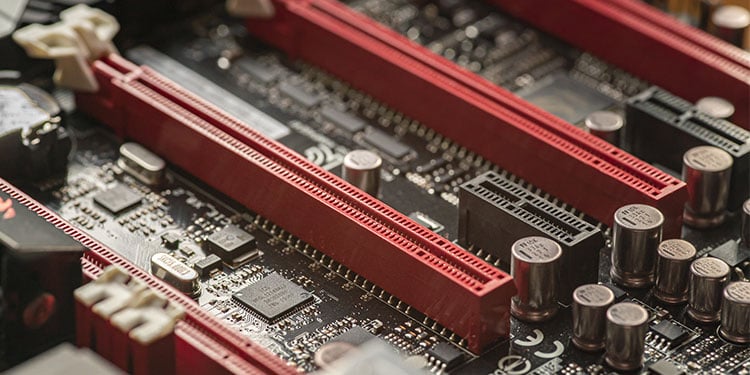When acquiring a motherboard or a graphics card, have you ever before questioned what the PCIe variations stand for? Plainly, the greater number is much better, yet what does it indicate to have a PCIe with a greater variation?
Today we are below to review the distinction in between PCIe 3.0 and also PCIe 2.0. Prior to we begin, allow us see what a PCIe is.
What is PCIe?
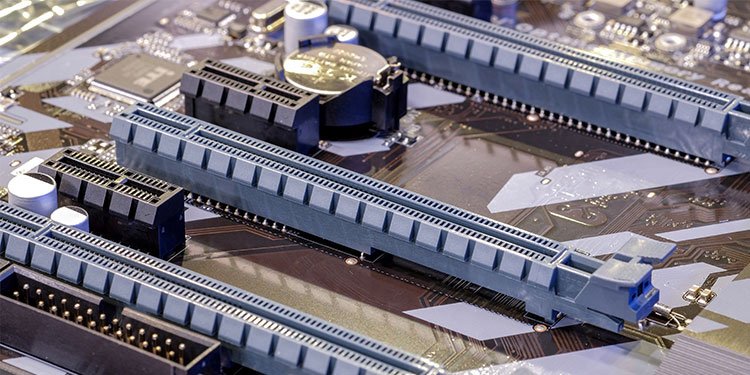
PCIe, or the Peripheral Component Interconnect Express, works as a user interface that attaches different inner computer parts such as the graphics card, SSD (Solid State Drive), audio card, NIC (Network Interface Card) card, and so on to the motherboard.
You might question why we utilize PCIe to attach essential computer system parts. Well, one details factor is that the PCIe supplies high-speed information transfer that parts, such as the GPU, need continuously.
PCIe variations
As of day, we have 5 variations of PCIe, PCIe 1.0 to 5.0. The PCIe variation is not to be puzzled with PCIe lanes, which we will certainly review later on in the write-up.
Basically, with each generation of PCIe, you will certainly have better transmission capacity, transfer price, and also regularity. For much less tech-savvy viewers, this indicates that the interior parts linked to their particular PCIe ports will certainly carry out a whole lot much better.
Furthermore, when you have a graphics card attached to a greater variation of PCIe, your video games will certainly additionally perform at greater Frames Per Second (FPS), offering you a smooth experience.
PCIe Lanes
Some might believe that PCIe lanes as well as PCIe ports coincide. This is not fairly the situation. PCIe lanes function as the tool whereby PCIe ports move information to the motherboard.
There can be 4, 8, sixteen, or thirty-two lanes of PCIe on a motherboard. PCIe x4 indicates this port utilizes 4 lanes to move its information. Various other PCIe ports utilize the staying lanes. X16 can utilize either 8 or 16 PCIe lanes.
PCIe Slots
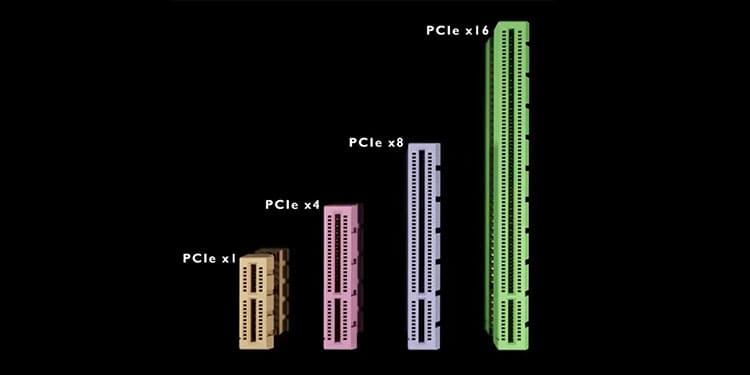
Depending on the motherboard, you will certainly have numerous PCIe ports. PCIe x1 is the quickest port with one PCIe lane, whereas PCIe x16 as well as x8 is the lengthiest port. PCIe x8 utilizes 8 lanes, whereas x16 can utilize either 8 or sixteen lanes.
For instance, think about that your motherboard has 20 complete PCIe lanes in total amount. If x16 makes use of 16 PCIe lanes, you currently just have 4 PCIe lanes left on your motherboard.
PCIe 3.0 Vs PCIe 2.0– Differences
Now that we understand concerning the PCIe, its lanes, as well as ports, allow us talk about contrast PCIe 3.0 as well as PCIe 2.0 in regards to inscribing, transmission capacity, transfer rate, as well as regularity. Depending on the port dimensions as well as variation, these terms differ.
So without more hold-up, allow us see what PCIe 3.0 gave the table.
First, allow’s take a look at some crucial distinctions in between PCIe variation 3.0 and also 2.0.
Encoding
The physical layer of PCIe 3.0 usages 128 B/130 B encoding, whereas PCIe 2.0 makes use of 8B/10 B encoding. This implies than PCIe 2.0 is not really reliable, given that, amongst the 10 little bits of information sent from the resource, 8bits (i.e. 20% of complete transmission) are overhanging.
In comparison to PCIe 3.0, which utilizes 128 b/130 b encoding, implying that just 1.5% of overall transmission is above. Plainly, PCIe 3.0 looks effective in regards to inscribing than PCIe 2.0.
PCIe variation 3.0, 4.0, and also 5.0, all usages 128 b/130 b encoding. PCIe 6.0 usages 242/256 b encoding, which indicates that 0.9% of complete transmission is overhanging.
Bandwidth
Below, we have actually contrasted the PCIe variation according to the data transfer that each variation sustains.
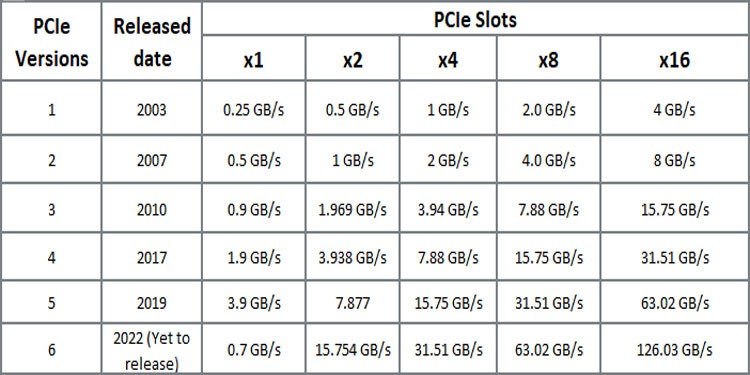
As we can see, PCIe 3.0 deals two times the transmission capacity contrasted to PCIe 3.0. This opts for various other variations as well, indicating that brand-new variations of PCIe will certainly supply dual the quantity of transmission capacity contrasted to the previous variations.
Transfer Rate
The optimum information transfer price for PCIe 3.0 is 8 GT/s (Giga Transfers Per Seconds), whereas variation 2.0 is 5GT/s.
Below, we have actually contrasted all variations according to the transfer price.
| PCIe Version | Transfer Rate |
| 1.0 | 2.5 GT/s |
| 2.0 | 5 GT/s |
| 3.0 | 8 GT/s |
| 4.0 | 16 GT/s |
| 5.0 | 32 GT/s |
| 6.0 (Not Released) | 64 GT/s |
Note: GT/s is a raw information price, which implies the variety of Bits/s that the bus can relocate or move.
Power Usage
Since PCIe 3.0 utilizes a reliable encoding, it moves a lot more information per secondly. In comparison to PCIe 2.0, which utilizes the exact same power to move information at a reduced rate.
This implies that PCIe 3.0 is likewise much more power-efficient contrasted to the previous generation’s expansion port.
FPS Performance
In the situation of the graphics card, interaction in between the card and also the motherboard requires to be a whole lot much faster. Considering that PCIe 3.0 supplies even more data transfer and also regularity than its previous generation 2.0, it likewise supplies some additional frameworks in couple of video games.
Unfortunately, in some video games, you can anticipate the exact same FPS. This is since a video game’s FPS mainly depends upon PCIe lanes instead of data transfer.
What Are the Similarities Between PCIe 2.0 Vs PCIe 3.0
Here’re a few of the resemblances in between PCIe 2.0 and also PCIe 3.0:
Physical Size
PCIe 3.0 and also 2.0 are literally the exact same considered that it coincides port, i.e., x1, x4, or, x8. Suggesting that x4 PCIe 3.0 as well as x4 PCIe 2.0 are precisely comparable.
So, if you intend to make use of the most recent variation of the PCIe card on an older generation motherboard that has a reduced variation of PCIe port, you can definitely do that.
Compatibility
Since the physical dimension of both PCIe 3.0 as well as PCIe 2.0 coincides, they work with each various other. If your motherboard has a PCIe 3.0 and also the graphics card has PCIe variation 2.0, you can link them.
Unfortunately, this will certainly trigger a traffic jam and also the information transfer price in between the PCIe port as well as port is the reduced of both.
For instance, if you have actually attached PCIe 2.0 as well as PCIe 3.0, the motherboard will certainly make use of the transfer rate of PCIe 2.0.
Related Questions
What is the Difference Between PCI and also PCIe
PCI (Peripheral Component Interconnect) has an identical link straight to the PCI bus. Whereas, the PCIe (Peripheral Component Interconnect Express) has a number of high-speed serial links to a button. This button is after that attached to the PCIe Bus. This supplies PCIe to have even more control over linked gadgets.
In regards to rate, PCIe is incredibly faster than PCI. To be precise PCIe is 118% faster than its precursor.
Do I have PCIe or PCI?
To inspect if your motherboard has PCI, or PCIe, you can inspect your motherboard information from the net. If you do not understand your motherboard information, below’re the actions:
- Open Run, kind “
msinfo32 exe” and also push E nter - Check your motherboard information like BaseBoard Manufacturer, Product, and also Versions.
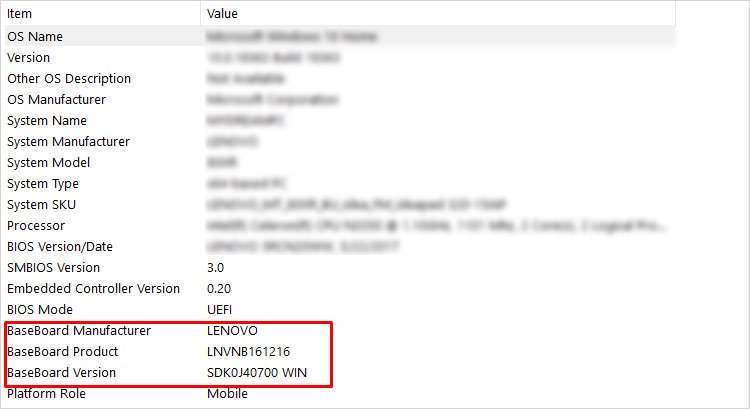
With the Motherboard information in hand, you can Google the item as well as discover the precise variation of PCIe you have.
Another means to recognize if you have PCI or PCIe is by considering the ports literally. Get rid of the Computer situation’s side panel. Find the lengthy ports on your motherboard. There can just be 2 kinds of lengthy ports on your motherboard. One is the DIMM port or the memory port, and also the various other one is either the PCIe or PCI port.
Read the works near these ports, it will certainly either claim PCI or PCIe.
Can I Use PCIe x1 on PCIe x4 Slot?
Yes, you can definitely make use of a smaller sized PCIe card on a bigger PCIe port. PCIe cards and also ports are developed as if they sustain cross-compatibility. If you put PCIe x1 card on an x2, x4, x8, or x16 port, it just makes use of one memory lane.
Although the port has even more lanes, the 1x PCIe card will just sustain one lane of memory. Triggering a traffic jam.
.
